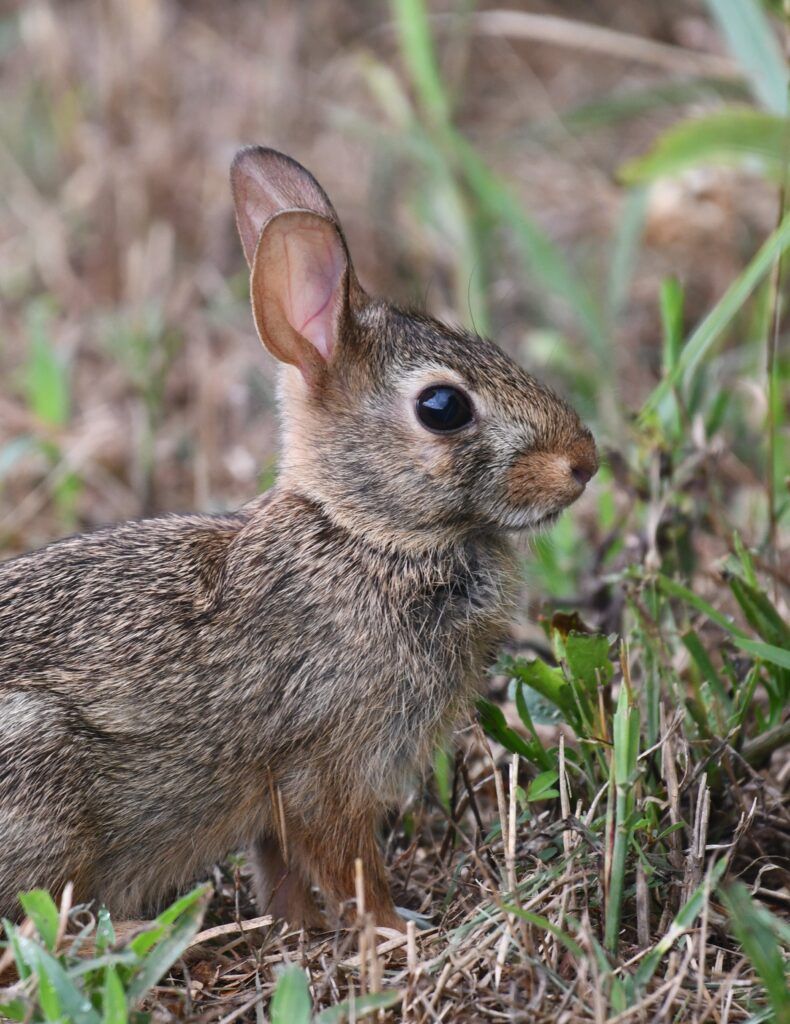In the Chinese zodiac, 2023 is the year of the rabbit. If that means we think about them as more than just a pest in the countryside, that’s a good thing because rabbits play an important part in shaping the British landscape.
Rabbits only really took off in the wild after about 1750. Before then, in the 12th century, the Normans introduced farmed rabbits – some of which escaped – and earlier still a select few had arrived with the Romans in the more pampered role of pets. But in the 18th century, changes in agriculture, and the growth of game-keeping, meant fewer predators and rabbit numbers grew. By the start of the 20th century, England, Scotland and Wales were home to an estimated 100 million rabbits.
‘We will fight them in the brassicas…’
And that adds up to a lot of munching. Rabbits feed on herbaceous plants, especially grasses, selecting young leaves and shoots. They’ll eat meadow plants, cereal crops, such as wheat and barley, and root vegetables, and in winter – particularly when snow covers the ground – will strip bark from trees. Damage to winter-planted cereals and other crops, as well as to pasture and forestry, costs hundreds of millions of pounds each year. But then, rabbits also have a big ecological value, too – it just isn’t easy to see.
In fact, the full impact of rabbits wasn’t fully recognised until they’d all but disappeared.
Rabbit numbers declined after the Second World War, but between 1953 and 1955, they crashed. Ninety-nine per cent of the population was lost when myxomatosis spread across the country. Many farmers and foresters welcomed the disease, but for a lot of people, at a time when meat was still rationed, rabbits had been a cheap and nutritious food.
And they had their supporters in high places, too. No less a figure than Winston Churchill played a personal role in making deliberate transmission of the disease a criminal offence – even after rabbits had caused an estimated £50 million of damage the year before the outbreak (over £1000 million in today’s money).
Digging for Britain
Without the grazing and digging activities of rabbits, Britain became a different place. Rabbits prefer to feed on short vegetation, where predators are easier to spot. By keeping the sward short, they prevent shrubby species and trees becoming established, maintaining open habitats of chalk downland, dunes, and heathland, each supporting a unique community of species. With rabbits all but gone, grasses grew taller, shading the soil, and woody species got a foothold. Large areas became scrubland and the diverse habitats that rabbits maintained were lost.
As well as shaping the landscape, rabbits are an important part of the food chain. Foxes, stoats, weasels and polecats feed on them, along with raptors such as buzzards, red kites and golden eagles. In Scotland, wildcat numbers were reported to fall after myxomatosis, and the breeding success of red kites and buzzards fell dramatically in the immediate wake of the disease.
It wasn’t long, however, before rabbit numbers bounced back. Natural resistance to myxomatosis appeared in the 1970s and the population began to recover. In 2018, it was estimated to be 36 million, albeit with a lot of uncertainty. But numbers are going down and have been since the 90s. Counts of rabbits killed on rural roads, in PTES’ Mammals on Roads survey, fell by two-thirds from 2001 to 2015, and a survey by the British Trust for Ornithology shows a similar drop between 1995 and 2021. In urban and suburban areas, rabbits are spotted in PTES’ Living with Mammals survey at a fifth fewer sites now than they were twenty years ago.
Another viral disease, rabbit haemorrhagic disease, which has spread through the population, may be playing a part in the decline, but loss of habitat, too, may be a factor. Rabbits might not be a species that comes to mind when we think about protecting nature, but they’re a keystone species – ecosystem engineers – on which whole habitats and communities depend. Without them, our countryside would be a lot less rich.
It’s easy to overlook rabbits or see them just as pests, eating crops or garden vegetables. But rabbits do a whole lot more. This year, of all years, we should give them some credit and try to ensure we don’t lose them again.
Header image credit Damian Kuzdak
Get involved with our mammal watching surveys, Living with Mammals today or visit our mammal fact files to learn more about British mammals:

